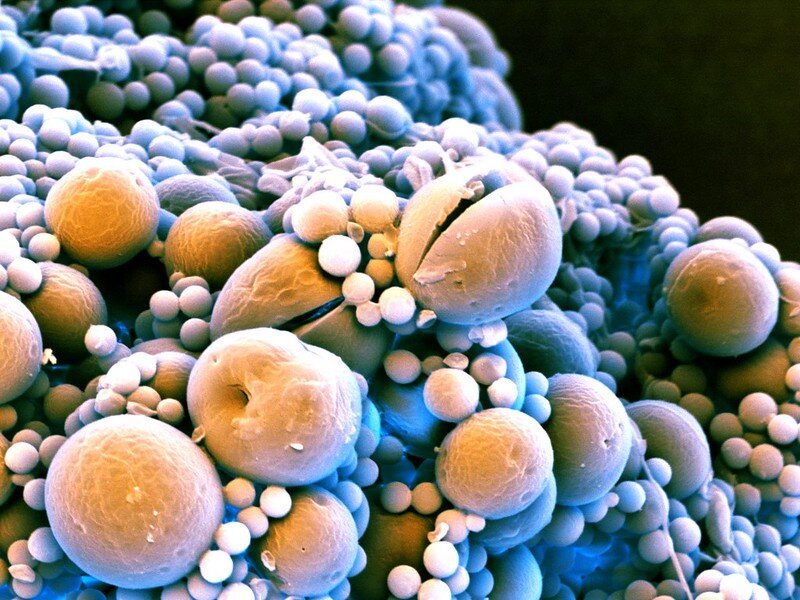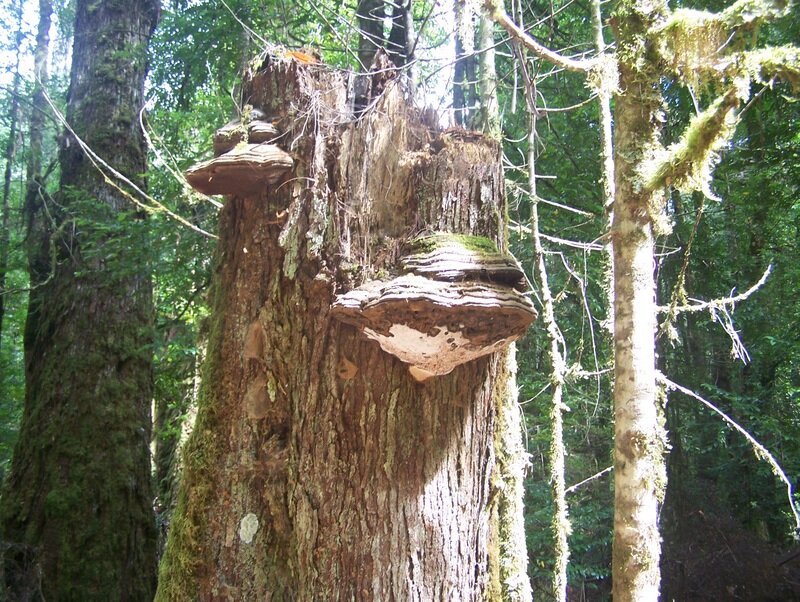Meet Mycelium
By Patrick Stephenson
Frequently, when people think of Fungus they think of mushrooms, skin issues, and mold. Sadly, this instrumental life form does not have the best marketing. As turns out Fungi are essential to the earth’s ecosystem and have been for more than 600 million years (Statmets, 2005).
Recyclers, Enrichers and Networkers
Fungi are some of the best recyclers of an ecological community. They help break down organic matter and enrich the soil of said ecosystem. It is also interesting to note that Fungi acts like a network connecting nutrients to different organisms, not unlike the internet. During this article, we will look into the fascinating world of Mycelium and talk about what it is, how it benefits the echo systems, and even how you can incorporate it into your garden!
What is Fungi? How does it work? Where do mushrooms come from?
Mycelium Spores
Fungi fall within the domain of Eukarya which means the cells of fungi have a nucleus like the cells of plants or animals. This differs from Prokaryote cells which lack a nucleus and are often bacteria or other single-cell organisms. So, these Eukarya cells form long branch-like structures in the topsoil of the ground that can stretch for miles. These long branch-like structures are called hypha. Fungi evolved to eat and digest food in a very interesting fashion. They secrete acids and enzymes into their surrounding environment and absorb the nutrients (Statmets 2005), therefore they are considered such great ecological recyclers.
Spreading Spores
So now we know a little bit about how mycelium eats, how it looks, and what it is made out of, but next let’s take a look at how Mycelium spreads. The spread of mycelium is where mushrooms come into play. Mushrooms release spores into the air which will then germinate and begin constructing hypha.
Spores Image: "Fungal spores" by ZEISS Microscopy is licensed under CC BY-NC-ND 2.0
Hypha
Connecting Network
Just like a forest, it takes many trees and many branches to make it populated and healthy. Well for a proper mycelium mat (mycelium that would be visible to the eye) the hypha of germinated spores spread out and connected with other germinated spores creating a mycelium network much as we have talked about above.
Image: "Mycelium" by Bushman.K is licensed under CC BY-NC 2.0
The Fruit of Mycelium
From here the network of mycelium gathers nutrients and creates a primordium, which is basically baby mushrooms. These mushrooms grow in various ways as you have probably observed from nature walks or your experiences in the garden. The various mushroom forms are adaptations for spreading spores more efficiently in their environment. Mushrooms are the fruit of mycelium like an apple is the fruit of the apple tree; they are by no means a standalone product of nature.
Image: https://commons.wikimedia.org/wiki/File:Mycorrhizal_network.svg
What are some of the different types of mushrooms?
There are three major groups that mushrooms fall into: mycorrhizal, parasitic, and saprophytic. Each of these groups has distinct characteristics that affect how their mycelium interacts with the environment.
Relationship Making Mycelium
The mycelium of mycorrhizal type mushrooms forms interdependent relationships with their environment. Meaning that both mycelium and other plants benefit from their relationship. The mycelium of these types produces some of the most desirable types of mushrooms such as truffles or morels.
Parasitic Mycelium - Boletus
Parasitic Mycelium
The next group is parasitic mycelium. This group can cause the most significant ecological harm. These types of mycelium live off a host plant. While historically these types of fungi have been shunned due to the potential damage that could be caused. Science is starting to show this group in a different light, but there is still much to discover about this type of mycelium and mycology in general.
Image: © Hans Hillewaert
Decomposing Mycelium
The final group is saprophytic mycelium, this type is a primary decomposer. This is very important because all ecosystems depend upon these fungi to decompose non-useful organic matter and return its state to something ecologically beneficial. The final beneficial ecological output of the saprophytic fungi life cycle is a return of carbon, hydrogen, nitrogen, and minerals back to the ecosystems in usable forms (Statmets, 2000). Within this group, there is even more division and classification, but for this article, we are only going to mention primary decomposers.
Decomposing Mycelium - Ganoderma
Image: Caine Barlow, CC BY-SA 3.0 <https://creativecommons.org/licenses/by-sa/3.0>, via Wikimedia Commons
A Crucial Organism to Our Way of Life
Mycelium is an interesting and great introduction to the wonderful world of fungi and how different types of life interact with an ecosystem. We explored what mycelium is, how it works, and the different categories of mushrooms that can fruit from a mycelial mat.
It is fun to contemplate how the different categories of mushrooms affect our environment and how many similarities they have with other forms of life. In some cases they are symbiotic and helpful to the environment, in others they are dangerous, and in some they can be beneficial to humans by providing food or decomposition. Many aspects of nature we may not think about often, mycelium is crucial to our way of life and the continued existence of our ecosystem.
Resources
Stamets, P. (2000). Growing Gourmet & Medicinal Mushrooms (3rd ed.). Berkeley, CA: Ten Speed Press.
Stamets, P. (2005). Mycelium Running: How Mushrooms Can Help Save the World (Illustrated ed.). Ten Speed Press.
More Resources
Radio Lab podcast, WNYC Studios, 2016 https://www.wnycstudios.org/podcasts/radiolab/articles/from-tree-to-shining-tree This is a great introductory podcast about mycelium. (expletives are used at the following time stamps: 22:10, 25:49, 26:09 and 26:11)
BBC Earth, BBC 2018. Animated graphic on the Wood Wide Web: https://www.facebook.com/watch/?v=2037274149625034
O’Harra and Trickell, “Kiss the Ground”. Big Picture Ranch and Benenson Productions, 2020. While not focused on Mycorrhizae, Kiss the Ground movie on Netflix is all about soil restoration https://www.netflix.com/title/81321999
Dordel and Tölke, Documentary Intelligent Trees, Ammo Content, Dorcon Film UG, 2016, spotlights Suzane Simard and Peter Wohlleben’s work https://www.amazon.com/Intelligent-Trees-Peter-Wohlleben/dp/B01LWIEY4F
Niskanen, T., et al. (2018). New discoveries: Species of fungi described in 2017. In: K. J. Willis (ed.), State of the World’s Fungi. Report. Royal Botanic Gardens, Kew. pp. 18–23. https://drive.google.com/file/d/1X2Jk0D5zHWuj9Gd7I9VLpYfJZTqn_0u9/view?usp=sharing The full report is available from: https://www.kew.org/science/state-of-the-worlds-plants-and-fungi.








